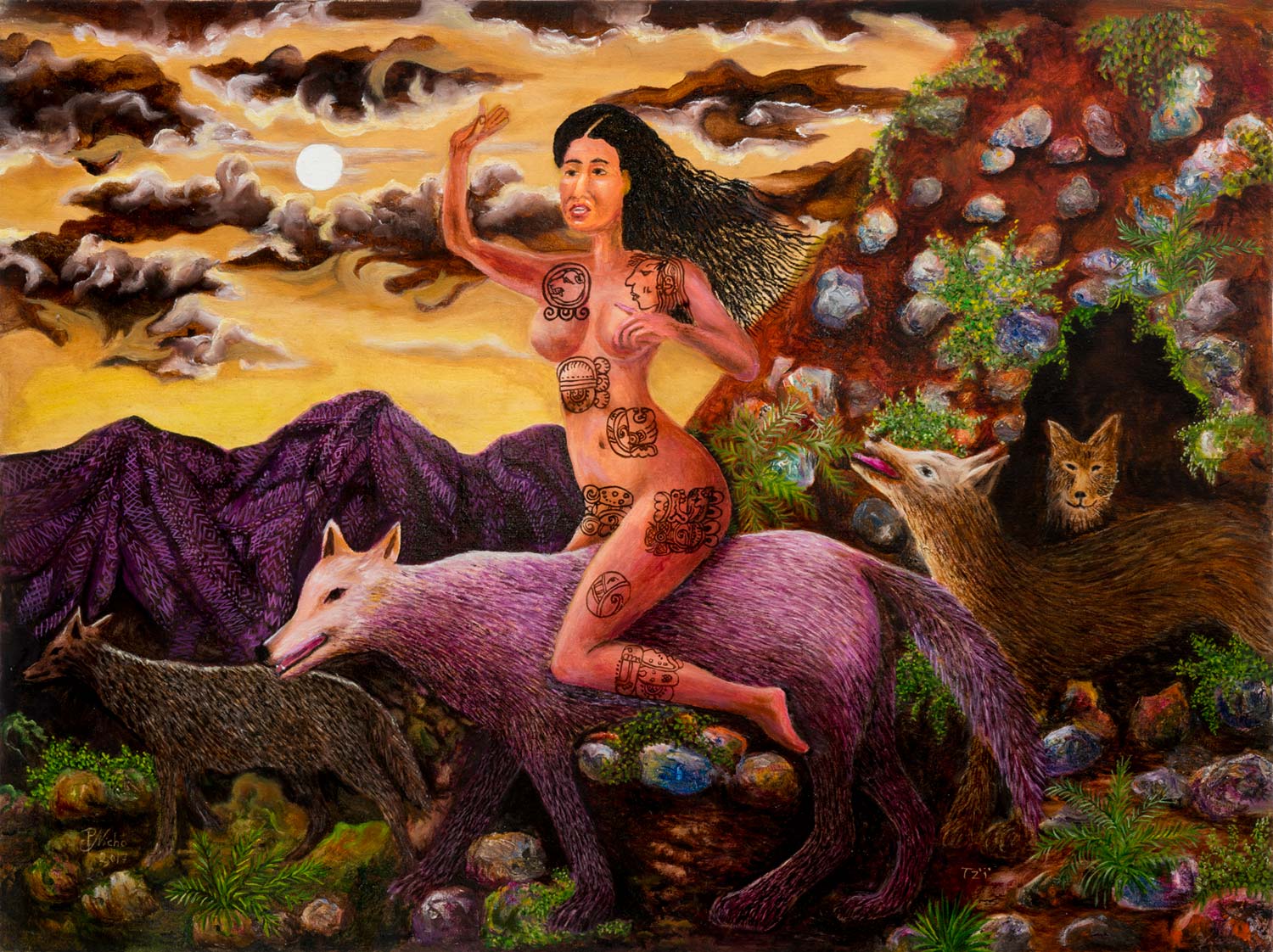Tz’i’ is the tenth day of the 260-day Maya ceremonial calendar, called the Cholq’ij. Each of the twenty day signs of the calendar have their own energy and protective spirit (nawal or ruwach ruq’ij). In the Kaqchikel Mayan language, tz’i’ commonly means wolf or coyote but is also the word for dog. In the context of the natural world, the nawal of the day tz’i’ is symbolized by the animal. In a spiritual context, this day signifies authority and judgement.
In Paula Nicho’s painting she depicts a naked woman covered with Mayan glyphs riding the back of a wolf. Paula’s paintings are always symbolic, and over time she has developed her own vocabulary of symbols that she uses repeatedly in her paintings. One of her common symbols is to paint onto their skin the designs of the traje (indigenous attire) that Maya women wear. Their traje is thus like a second skin—an integral part of their identity. In this painting she uses that same device in a different manner. Rather than the designs of the traje painted on the woman’s skin, here we see Mayan glyphs from the written form of the Mayan languages. The glyph for tz’i’ is painted on the woman’s upraised arm. The glyphs connect the woman not only to the spoken Mayan languages but also to the Maya calendar.
Another symbol present in the painting are the mountains in the background. Looking closely at them, we see that they are covered with the designs found on Maya weavings.
On the right of the painting, there is a den or cave. For the Maya, caves are entrances to the underworld or Xibalbá. Tz’i’ is the guide for the dead, who must be led across the river to the afterlife so they may be reborn. The ancient Maya believed it was dogs who accompanied souls of the deceased along the path to Xibalbá.


